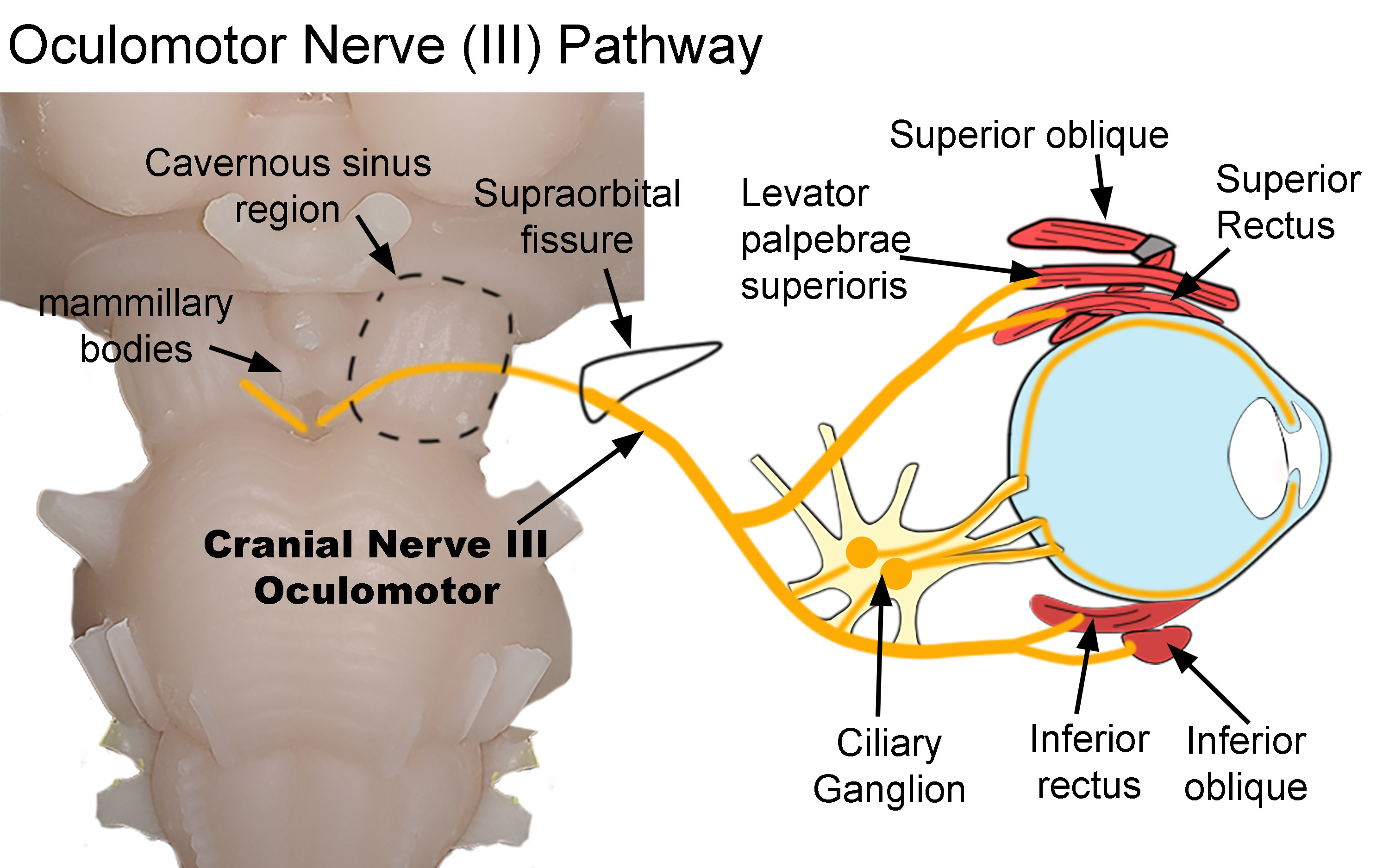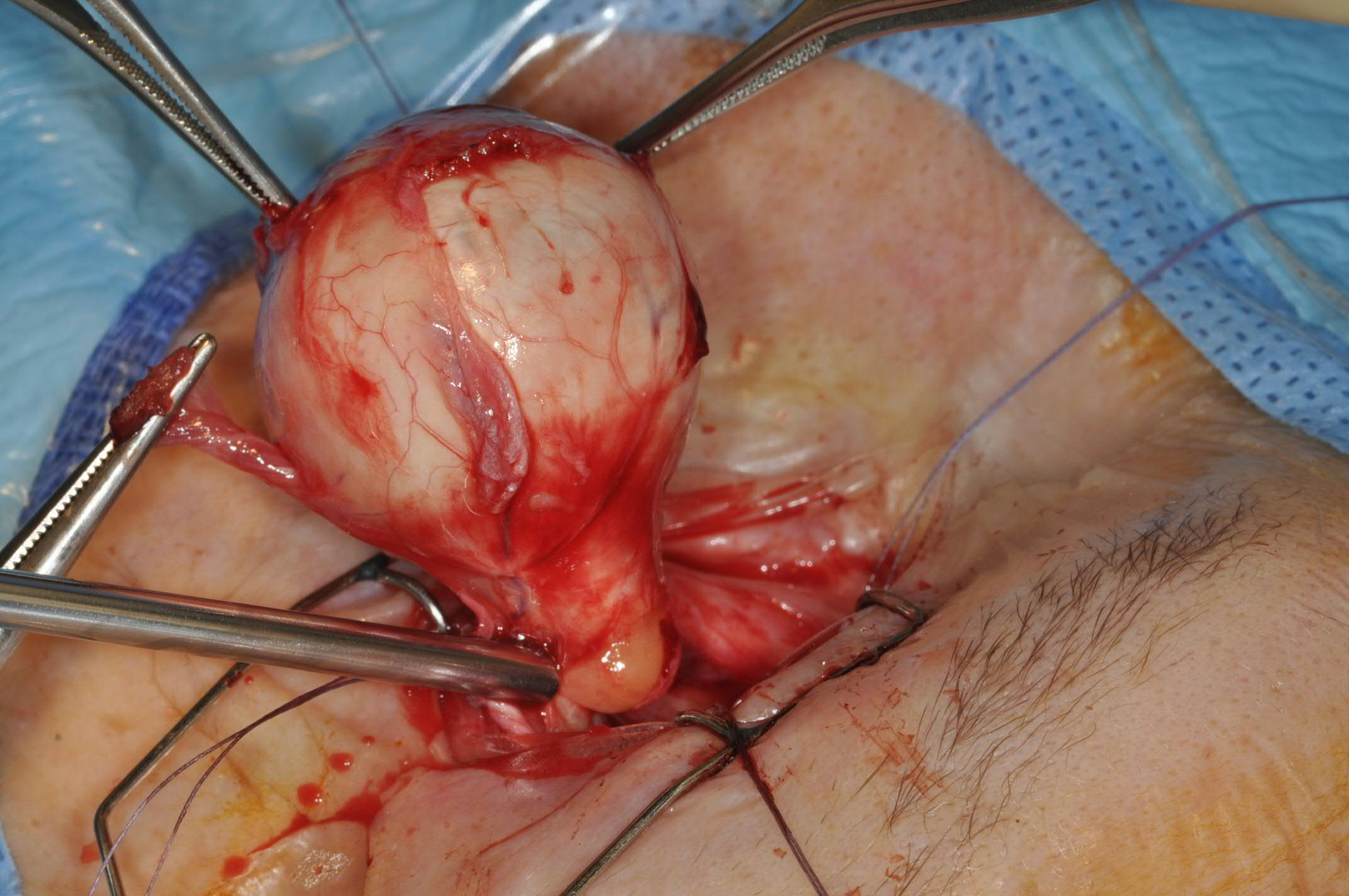[1]
Stager D Jr, Dao LM, Felius J. Uses of the Inferior Oblique Muscle in Strabismus Surgery. Middle East African journal of ophthalmology. 2015 Jul-Sep:22(3):292-7. doi: 10.4103/0974-9233.159723. Epub
[PubMed PMID: 26180466]
[2]
Shumway CL, Motlagh M, Wade M. Anatomy, Head and Neck, Eye Extraocular Muscles. StatPearls. 2024 Jan:():
[PubMed PMID: 30137849]
[3]
Kumar V, Murlimanju BV, Devika P, Nair N, Pai SR, Pulakunta T, Naveen NS. An anatomical study of the inferior oblique muscle with emphasis on its nerve entry. Chang Gung medical journal. 2011 May-Jun:34(3):293-7
[PubMed PMID: 21733359]
[4]
Haładaj R, Wysiadecki G, Polguj M, Topol M. Bilateral muscular slips between superior and inferior rectus muscles: case report with discussion on classification of accessory rectus muscles within the orbit. Surgical and radiologic anatomy : SRA. 2018 Jul:40(7):855-862. doi: 10.1007/s00276-018-1976-6. Epub 2018 Jan 24
[PubMed PMID: 29368252]
Level 3 (low-level) evidence
[5]
Jin ZW, Umeki S, Takeuchi Y, Yamamoto M, Murakami G, Abe S, Rodríguez-Vázquez JF. Inferior oblique muscle of the eye: its foetal development with special reference to understanding of the frequent variants in adults. Folia morphologica. 2022:81(2):442-450. doi: 10.5603/FM.a2021.0043. Epub 2021 May 6
[PubMed PMID: 33954958]
Level 3 (low-level) evidence
[6]
Buckingham M. Gene regulatory networks and cell lineages that underlie the formation of skeletal muscle. Proceedings of the National Academy of Sciences of the United States of America. 2017 Jun 6:114(23):5830-5837. doi: 10.1073/pnas.1610605114. Epub
[PubMed PMID: 28584083]
[7]
Hebert SL, Daniel ML, McLoon LK. The role of Pitx2 in maintaining the phenotype of myogenic precursor cells in the extraocular muscles. PloS one. 2013:8(3):e58405. doi: 10.1371/journal.pone.0058405. Epub 2013 Mar 7
[PubMed PMID: 23505501]
[9]
Mojallal A, Cotofana S. Anatomy of lower eyelid and eyelid-cheek junction. Annales de chirurgie plastique et esthetique. 2017 Oct:62(5):365-374. doi: 10.1016/j.anplas.2017.09.007. Epub 2017 Oct 14
[PubMed PMID: 29033216]
[10]
Stager DR. The neurofibrovascular bundle of the inferior oblique muscle as its ancillary origin. Transactions of the American Ophthalmological Society. 1996:94():1073-94
[PubMed PMID: 8981719]
[11]
Erdogmus S, Govsa F, Celik S. Innervation features of the extraocular muscles. The Journal of craniofacial surgery. 2007 Nov:18(6):1439-46
[PubMed PMID: 17993897]
[12]
Shumway CL, Motlagh M, Wade M. Anatomy, Head and Neck: Eye Superior Rectus Muscle. StatPearls. 2024 Jan:():
[PubMed PMID: 30252323]
[13]
Shahraki K, Hakimeh C, Suh DW. Modified horizontal muscle transposition without tenotomy and splitting for a case of inferior rectus and inferior oblique muscles aplasia with hemifacial microsomia. Journal of AAPOS : the official publication of the American Association for Pediatric Ophthalmology and Strabismus. 2023 Dec:27(6):354-357. doi: 10.1016/j.jaapos.2023.07.015. Epub 2023 Sep 22
[PubMed PMID: 37741493]
Level 3 (low-level) evidence
[14]
Deangelis DD, Kraft SP. The double-bellied inferior oblique muscle: clinical correlates. Journal of AAPOS : the official publication of the American Association for Pediatric Ophthalmology and Strabismus. 2001 Apr:5(2):76-81
[PubMed PMID: 11304813]
[15]
Yalçin B, Ozan H. Insertional pattern of the inferior oblique muscle. American journal of ophthalmology. 2005 Mar:139(3):504-8
[PubMed PMID: 15767061]
[16]
De Angelis D, Makar I, Kraft SP. Anatomic variations of the inferior oblique muscle: a potential cause of failed inferior oblique weakening surgery. American journal of ophthalmology. 1999 Oct:128(4):485-8
[PubMed PMID: 10577590]
[17]
Yalçin B, Kocabiyik N, Ozan H, Kutoglu T. Muscular bridge between the inferior oblique and inferior rectus muscles. American journal of ophthalmology. 2004 Jan:137(1):121-4
[PubMed PMID: 14700654]
[18]
Sanjari MS, Shahraki K, Nekoozadeh S, Tabatabaee SM, Shahraki K, Aghdam KA. Surgical treatments in inferior oblique muscle overaction. Journal of ophthalmic & vision research. 2014 Jul-Sep:9(3):291-5. doi: 10.4103/2008-322X.143355. Epub
[PubMed PMID: 25667727]
[19]
Stager DR, Weakley DR Jr, Stager D. Anterior transposition of the inferior oblique. Anatomic assessment of the neurovascular bundle. Archives of ophthalmology (Chicago, Ill. : 1960). 1992 Mar:110(3):360-2
[PubMed PMID: 1543454]
[20]
Rajavi Z, Feizi M, Behradfar N, Yaseri M, Sayanjali S, Motevaseli T, Sabbaghi H, Faghihi M. Inferior Oblique Overaction: Anterior Transposition Versus Myectomy. Journal of pediatric ophthalmology and strabismus. 2017 Jul 1:54(4):232-237. doi: 10.3928/01913913-20170309-01. Epub 2017 May 17
[PubMed PMID: 28510770]
[21]
Stager DR. Costenbader lecture. Anatomy and surgery of the inferior oblique muscle: recent findings. Journal of AAPOS : the official publication of the American Association for Pediatric Ophthalmology and Strabismus. 2001 Aug:5(4):203-8
[PubMed PMID: 11507578]
[22]
Sokeer SH, Ali AL, Arafa ES, Awara AM, Shafik HM. Evaluation of graded recession of inferior oblique muscle for correction of different grades of V-pattern strabismus. BMC ophthalmology. 2023 Nov 16:23(1):462. doi: 10.1186/s12886-023-03210-x. Epub 2023 Nov 16
[PubMed PMID: 37974078]
[23]
Mowlavi A, Neumeister MW, Wilhelmi BJ. Lower blepharoplasty using bony anatomical landmarks to identify and avoid injury to the inferior oblique muscle. Plastic and reconstructive surgery. 2002 Oct:110(5):1318-22; discussion 1323-4
[PubMed PMID: 12360075]


